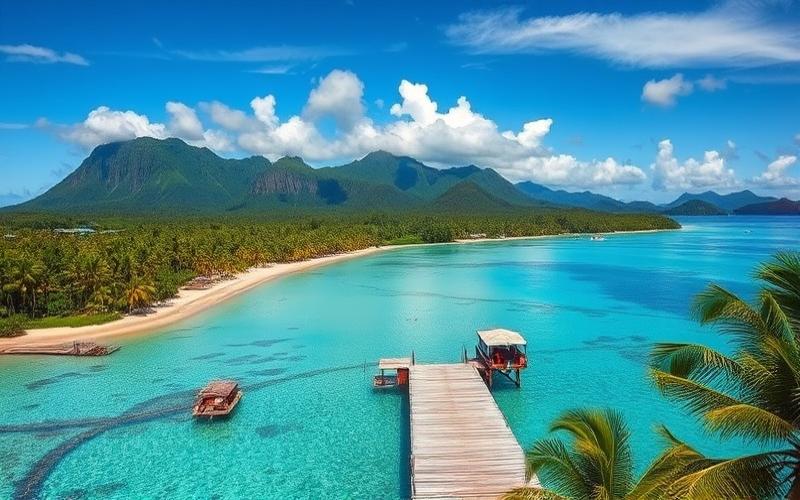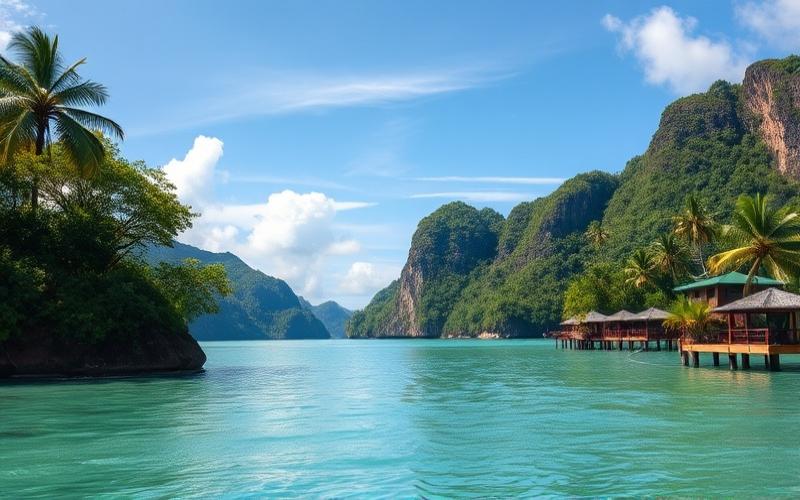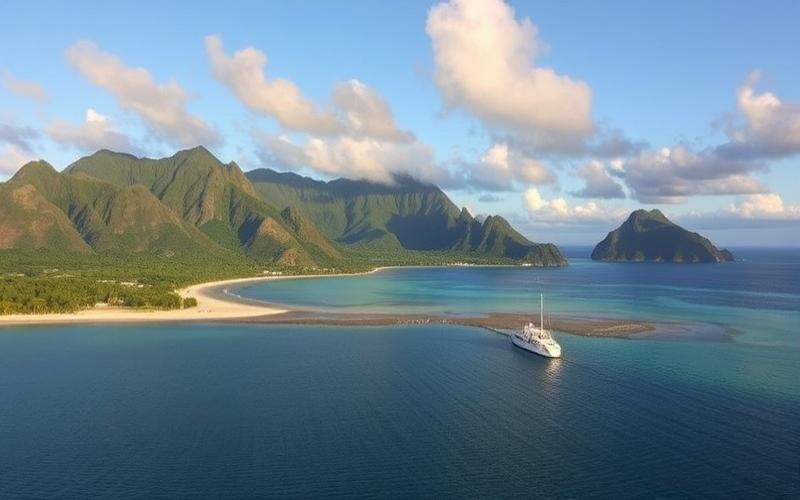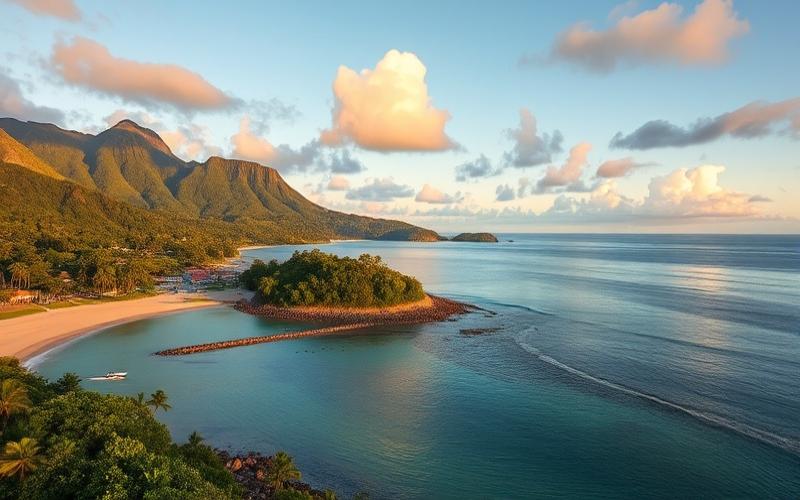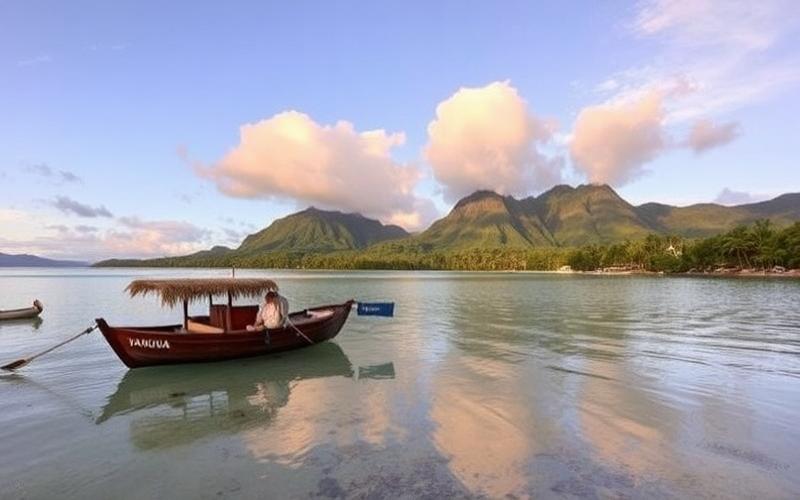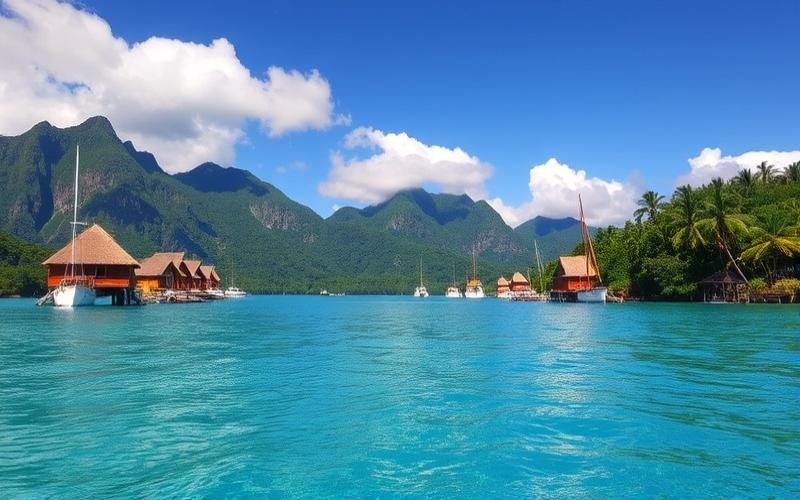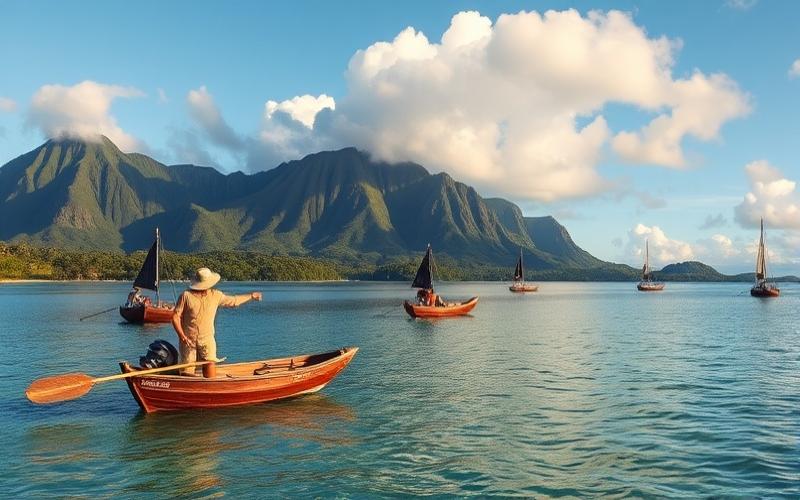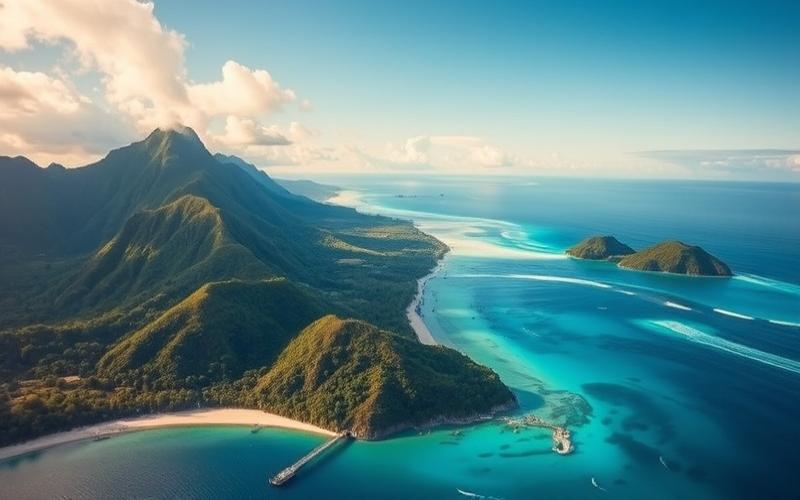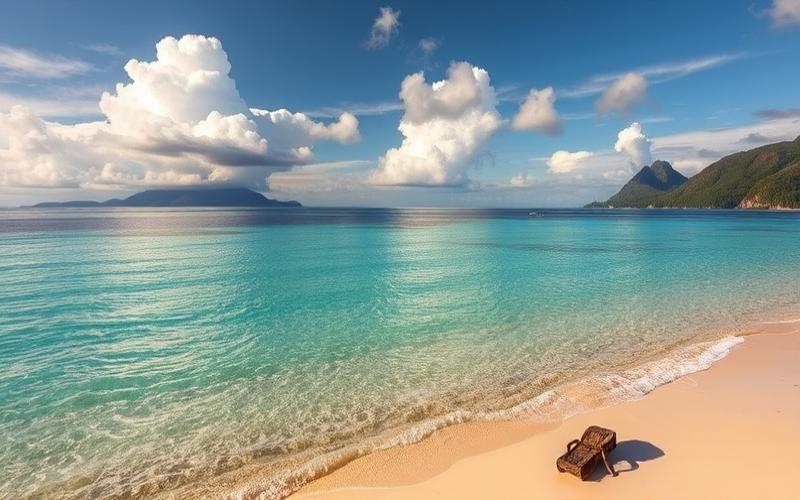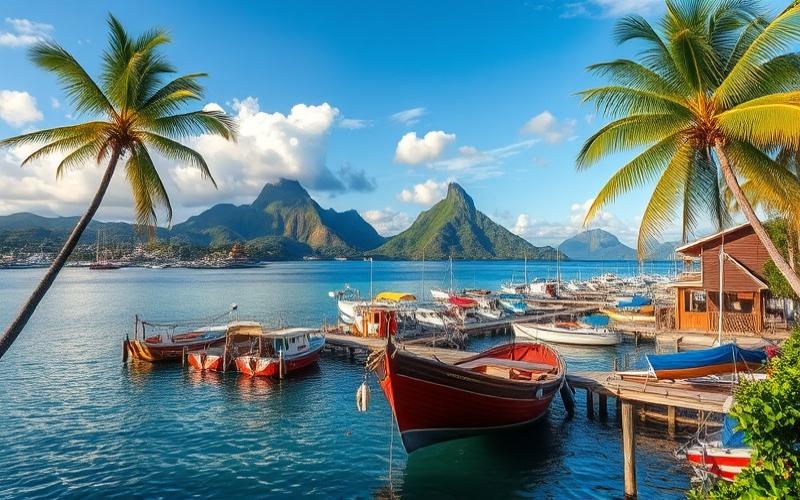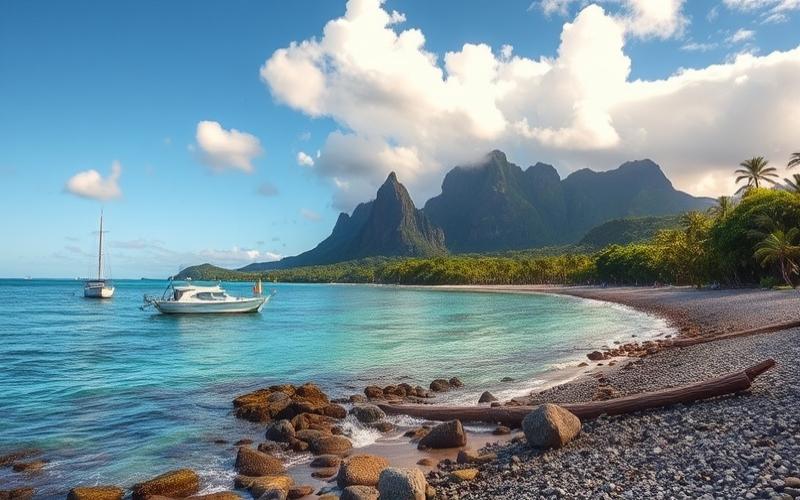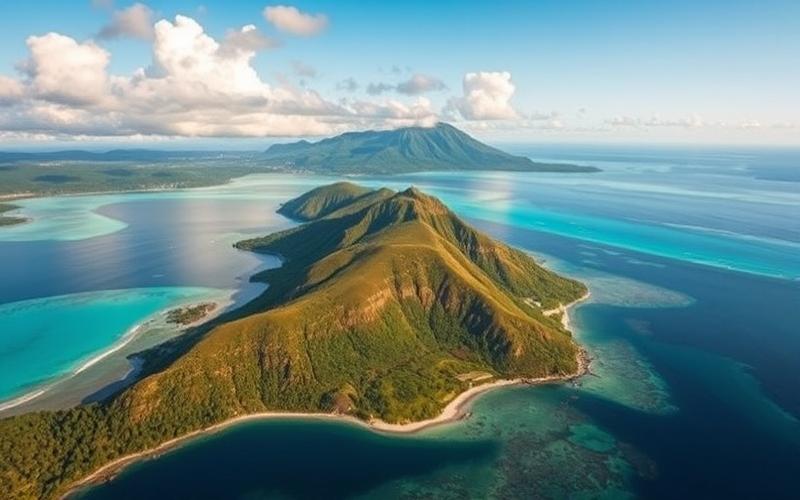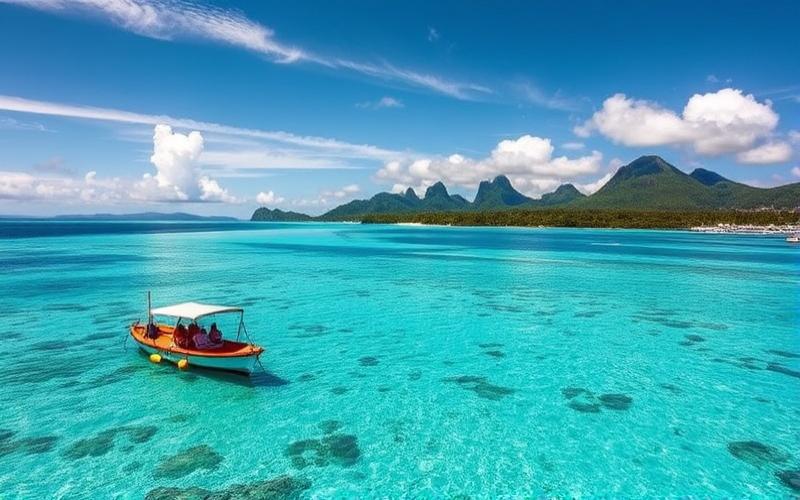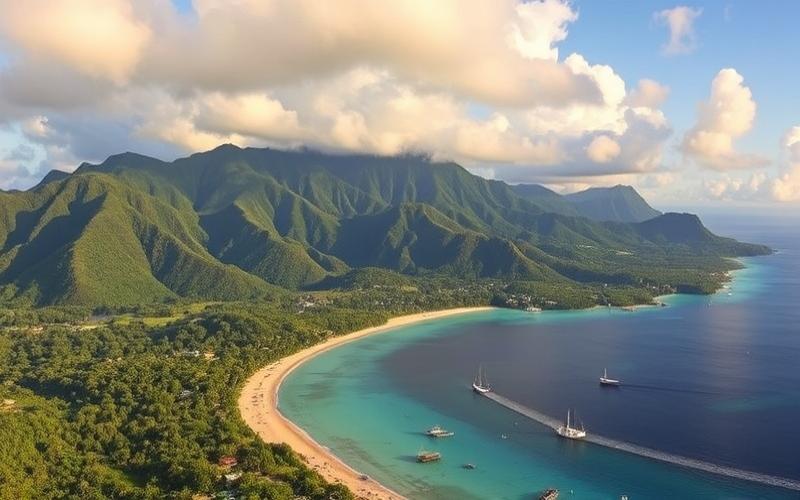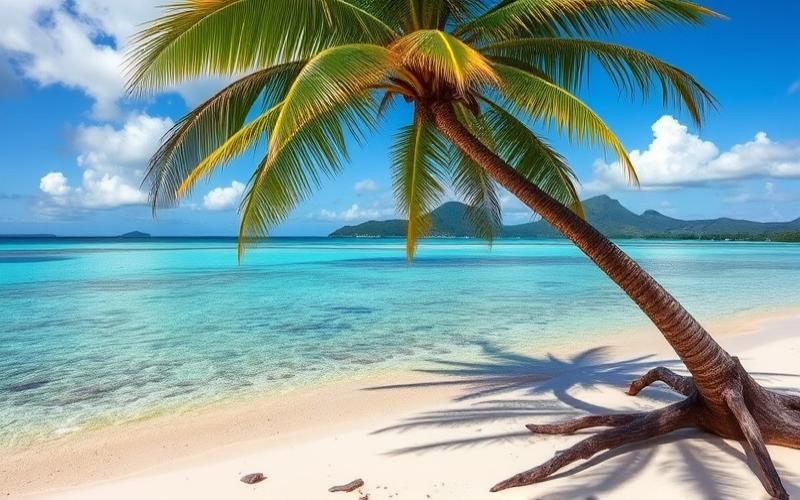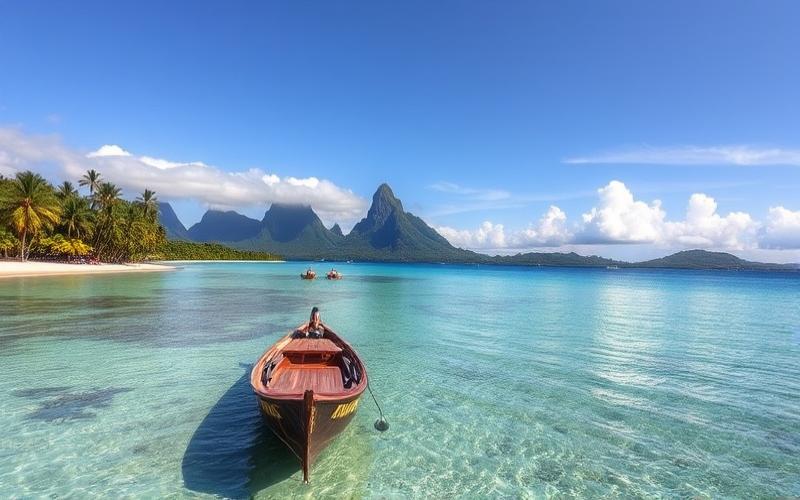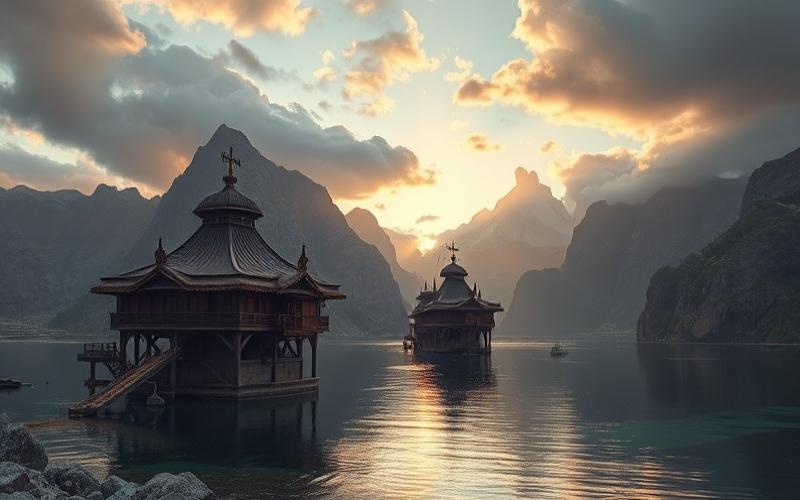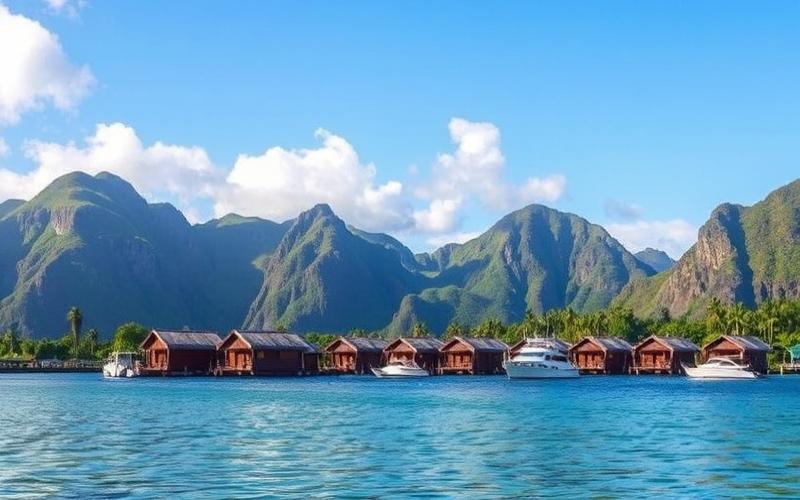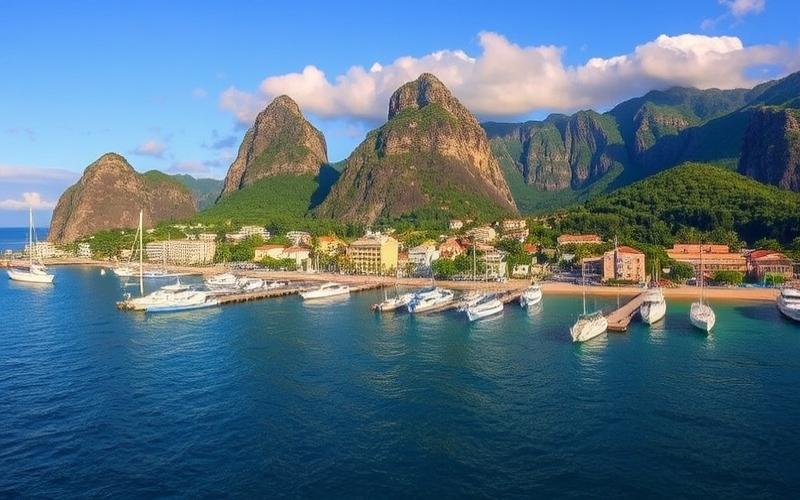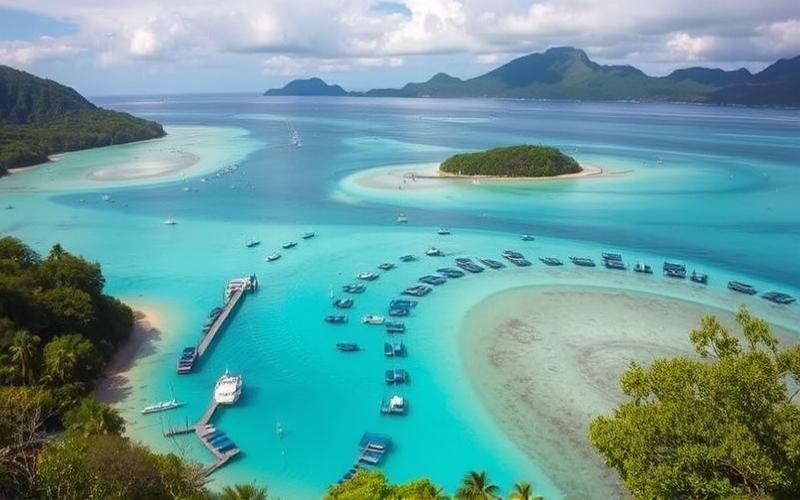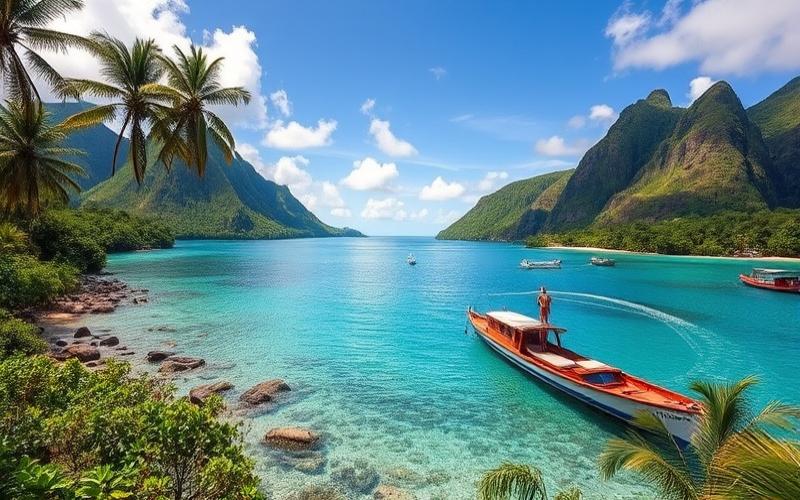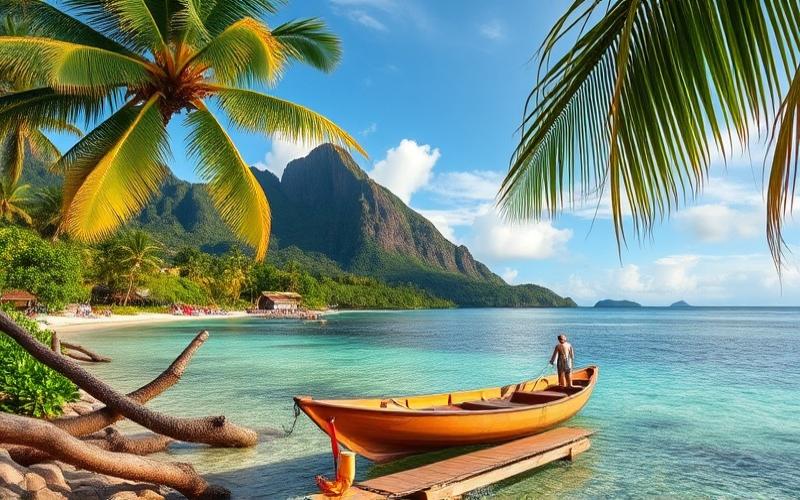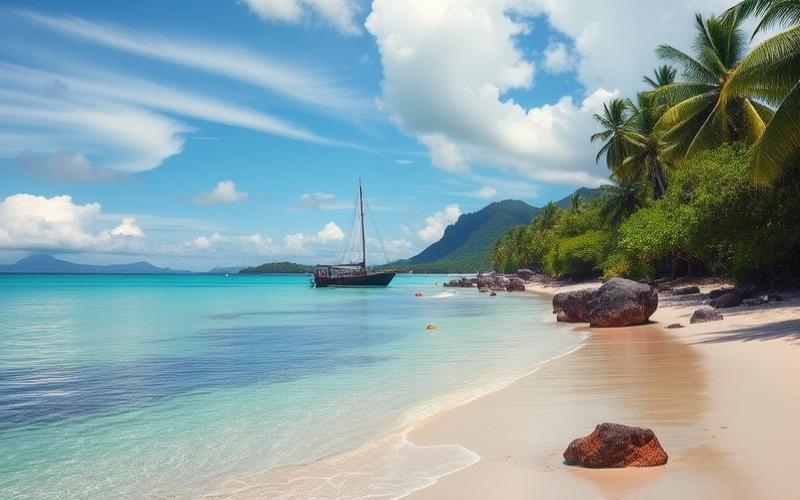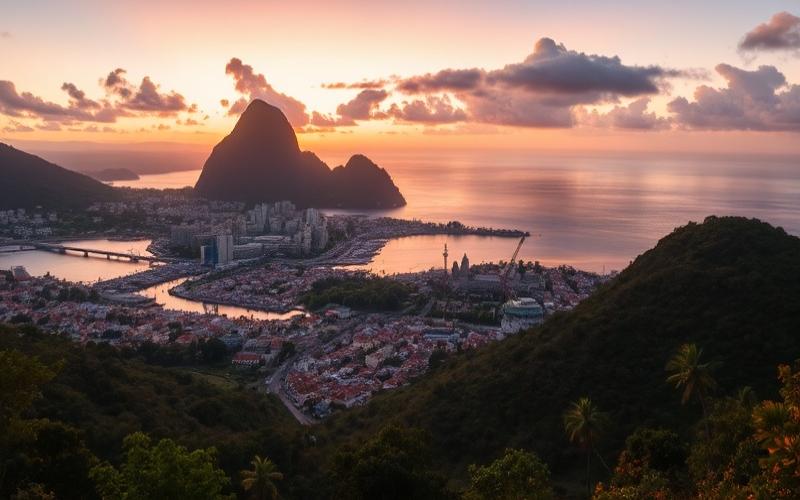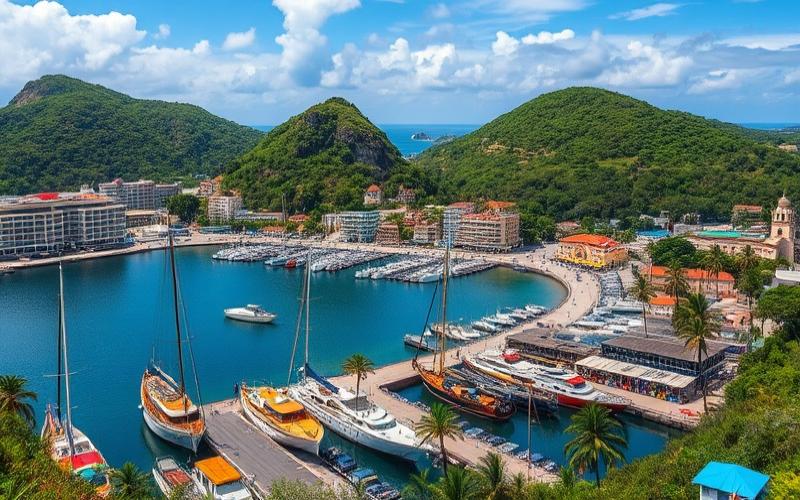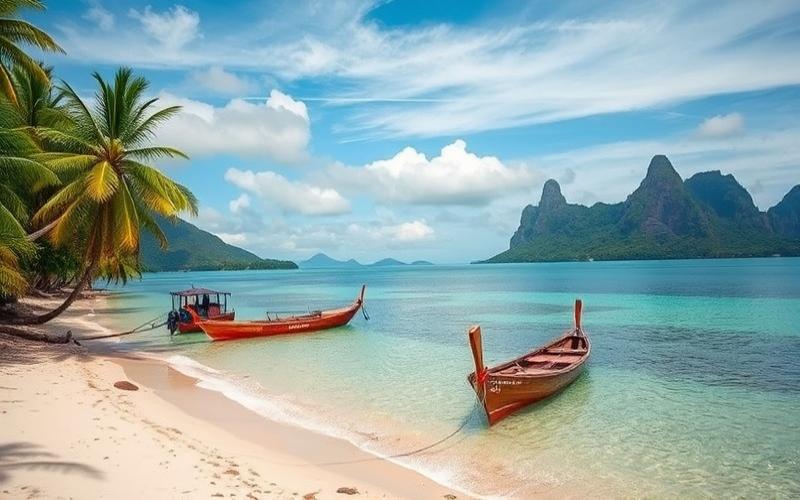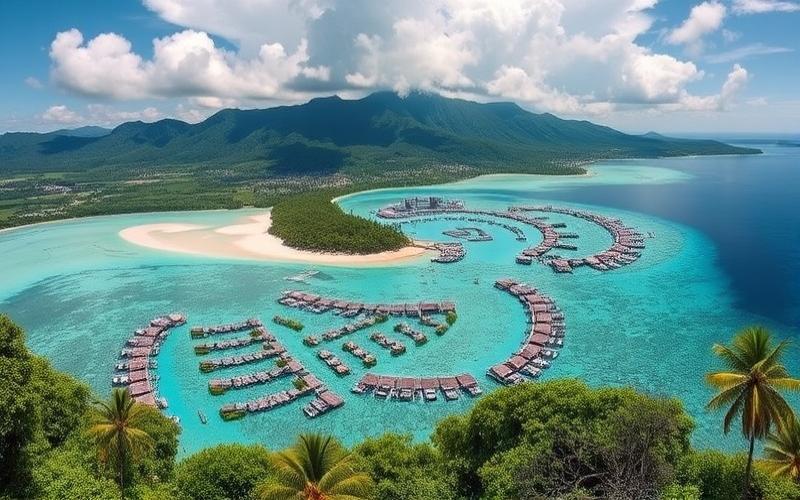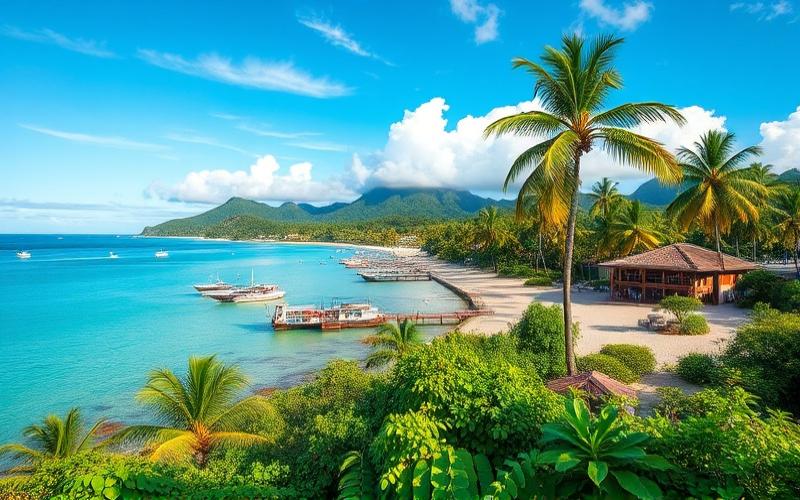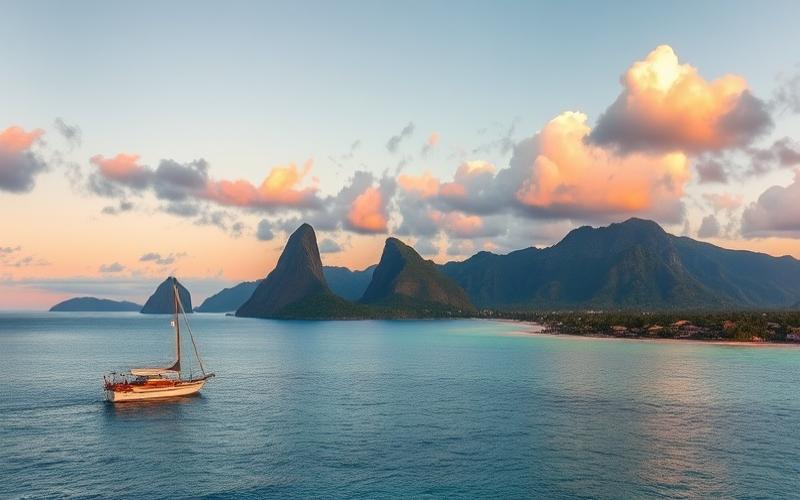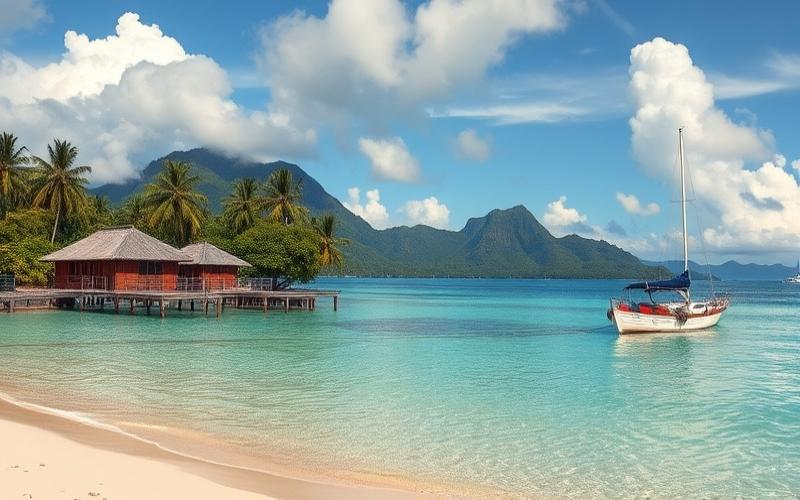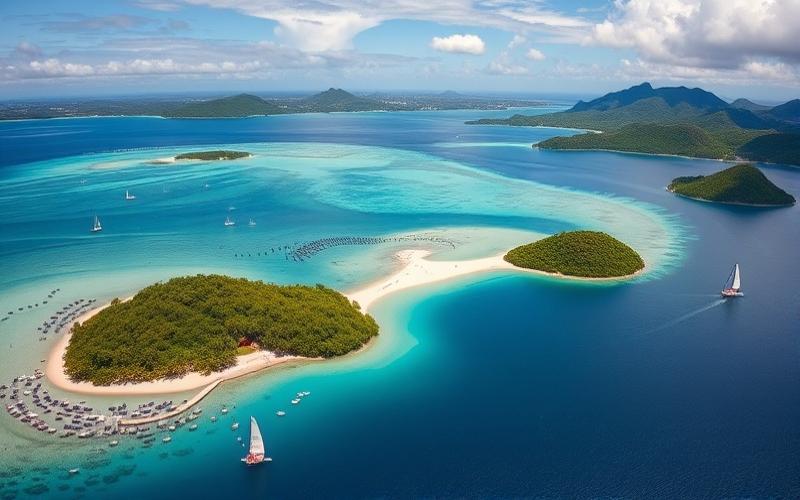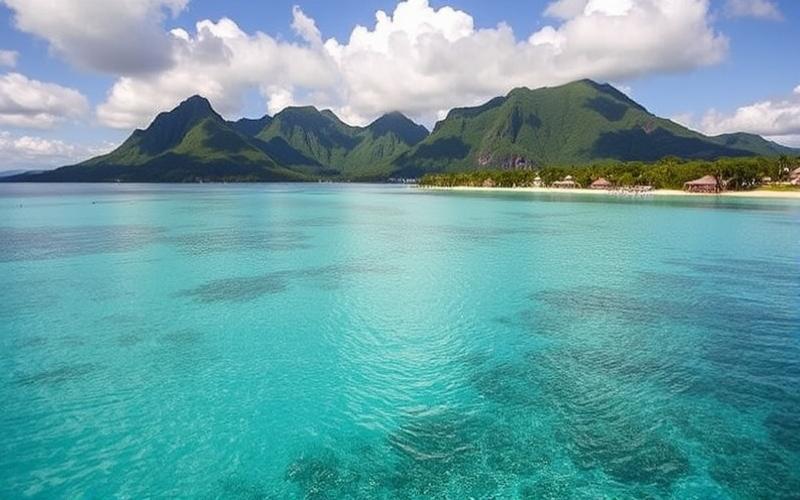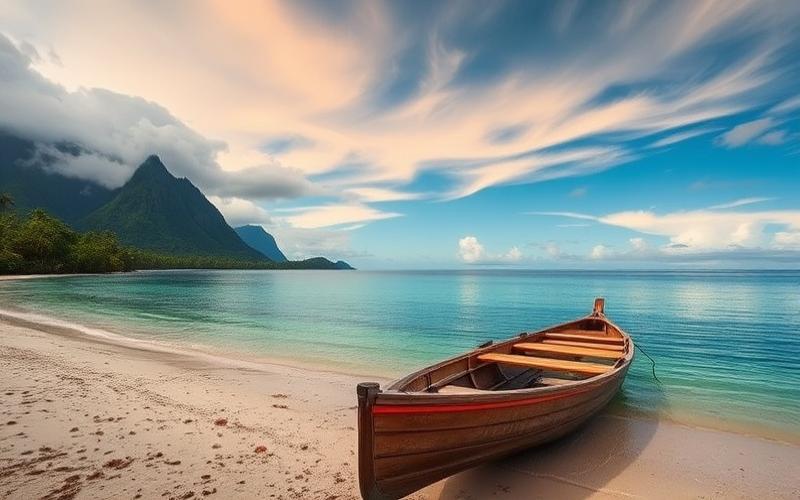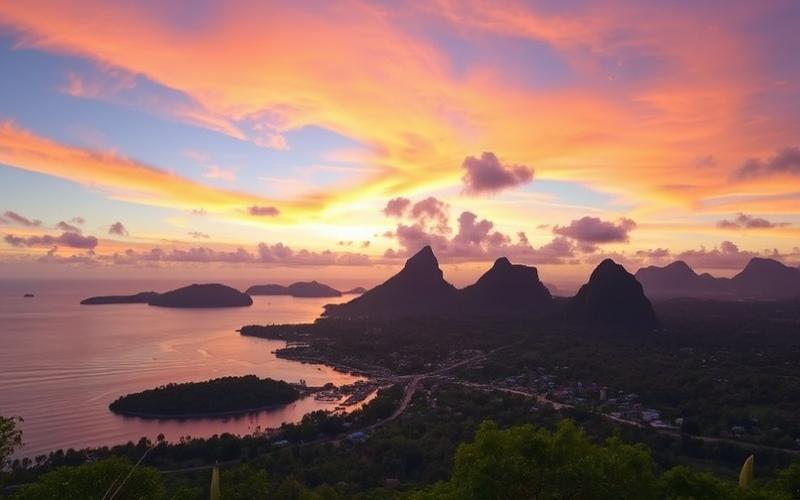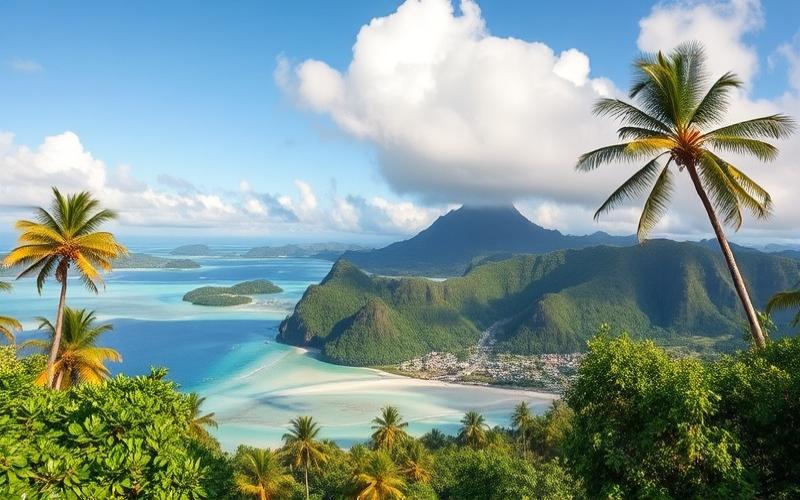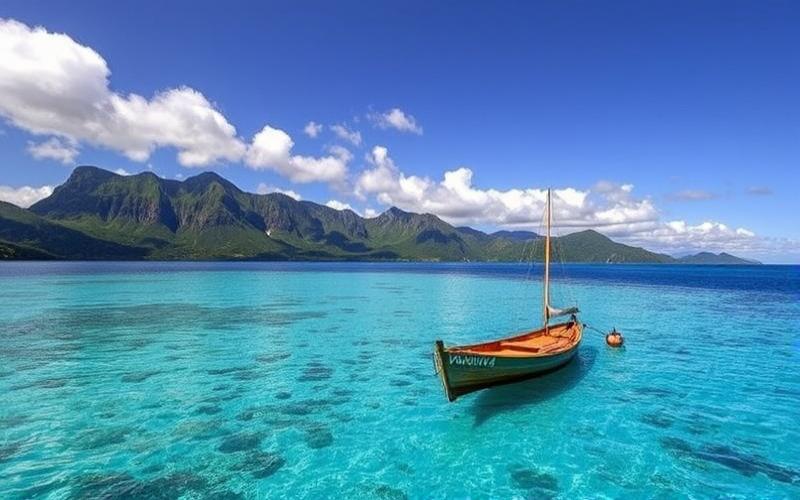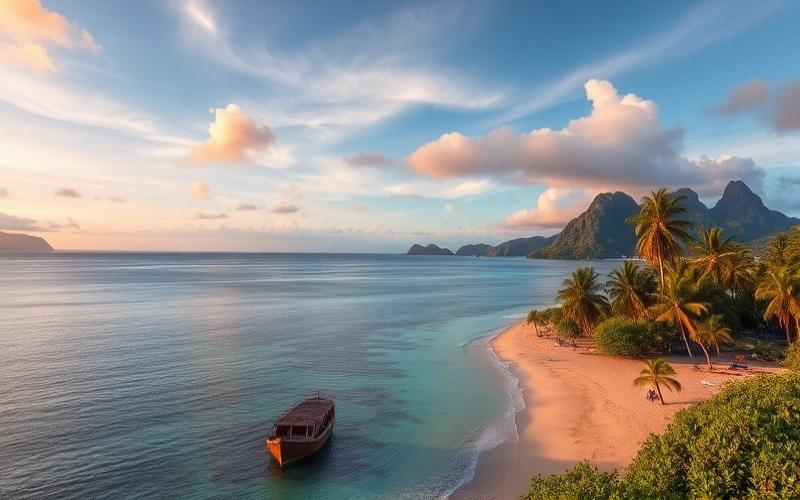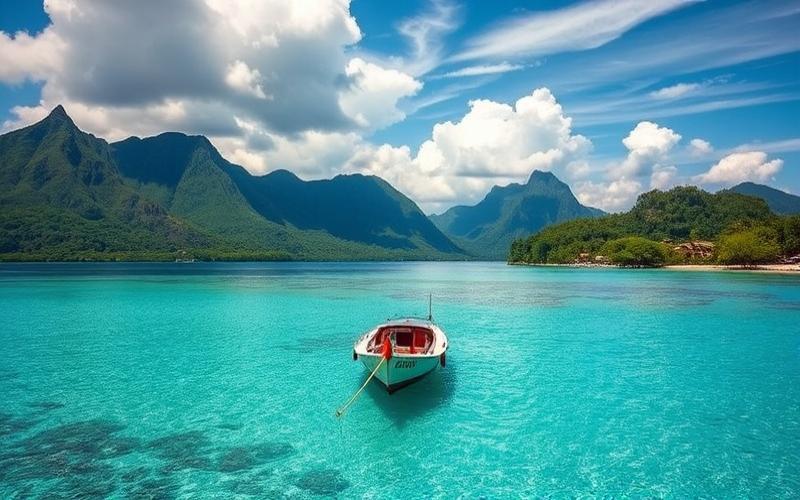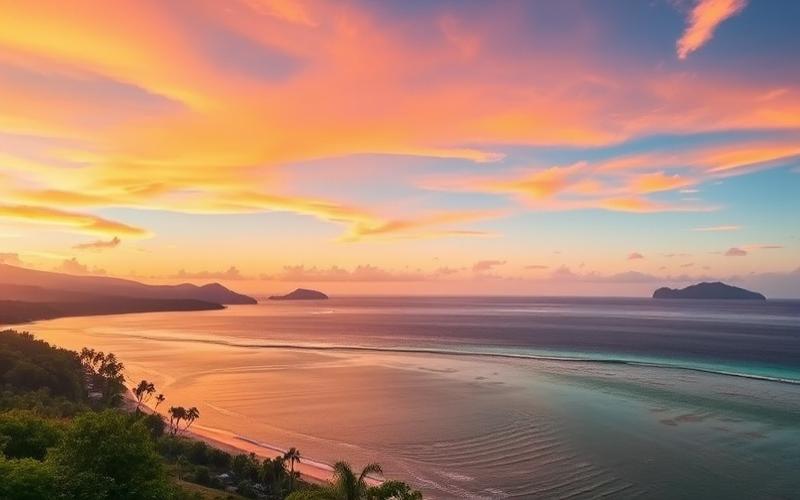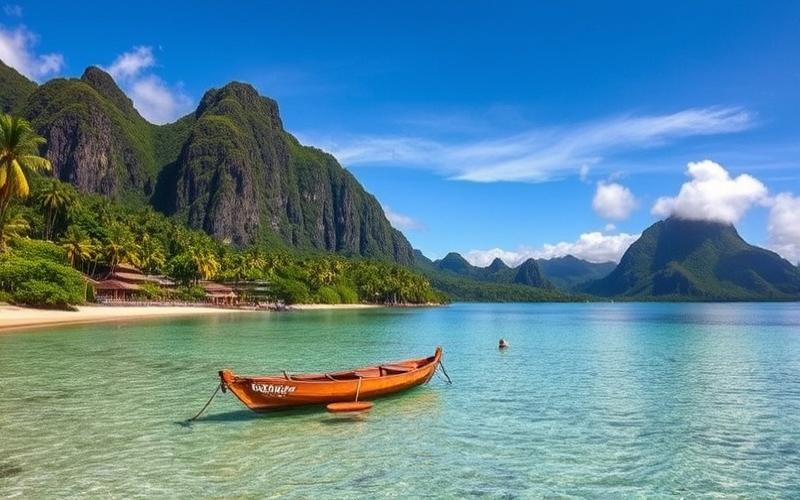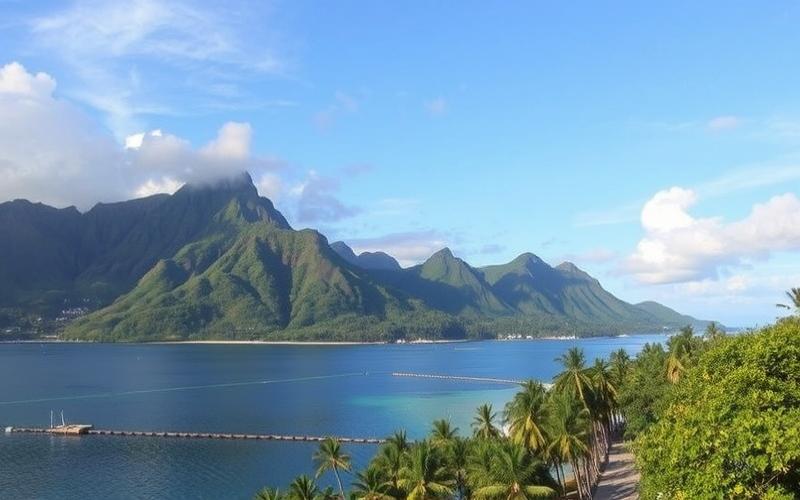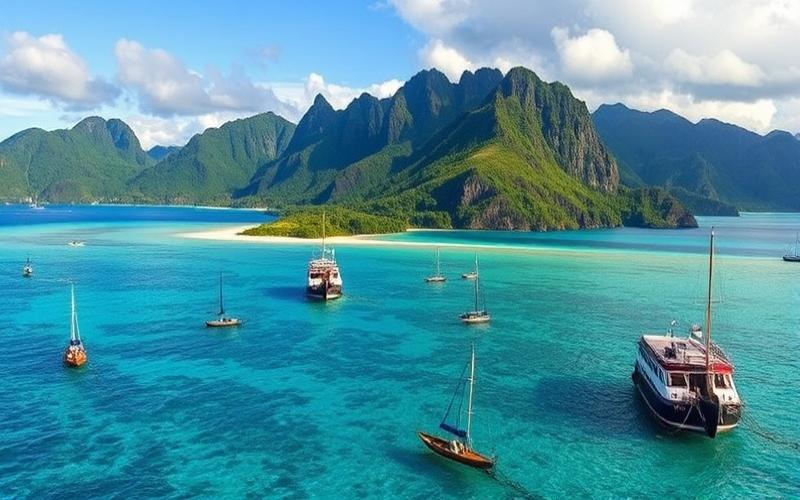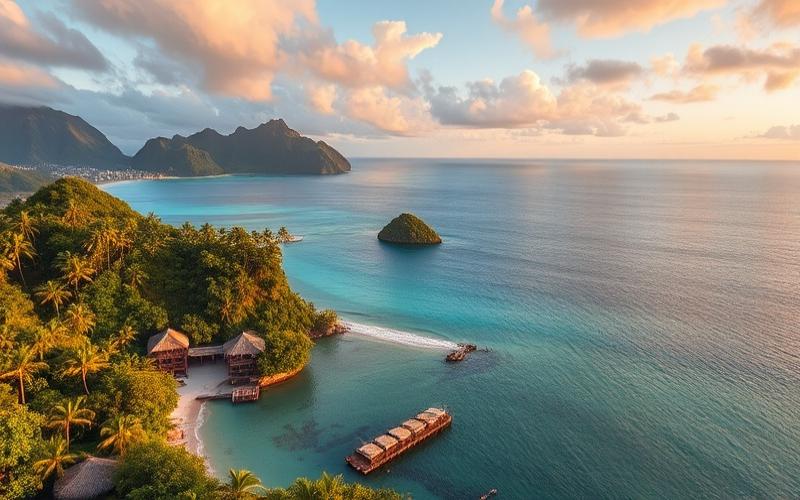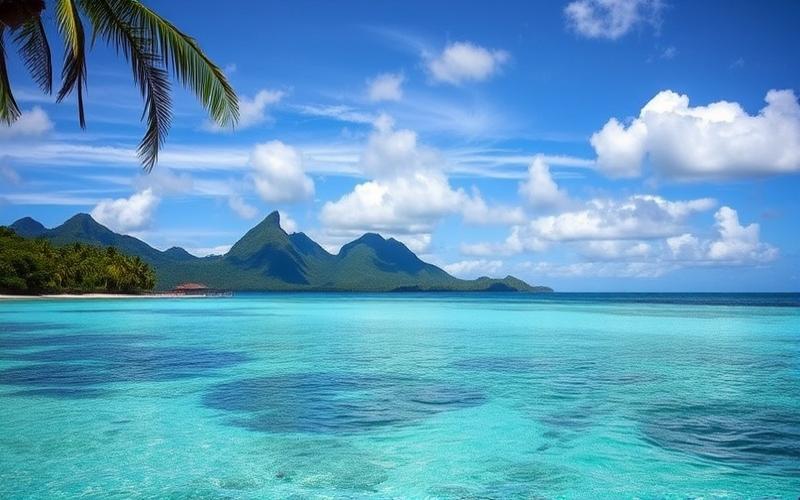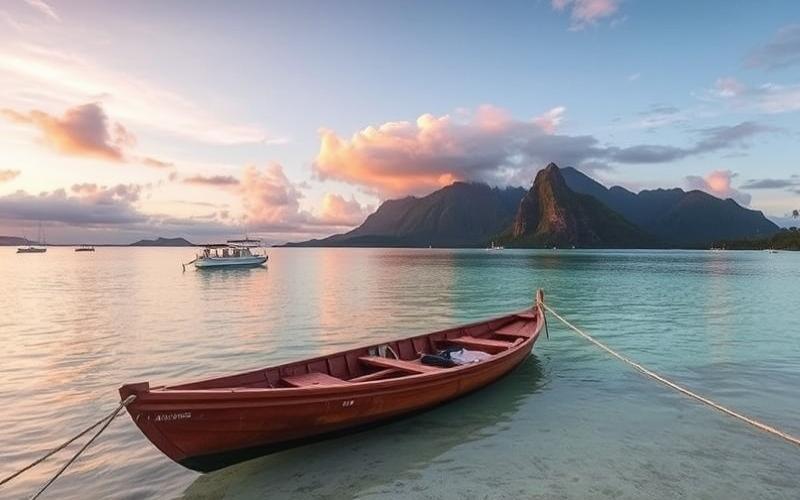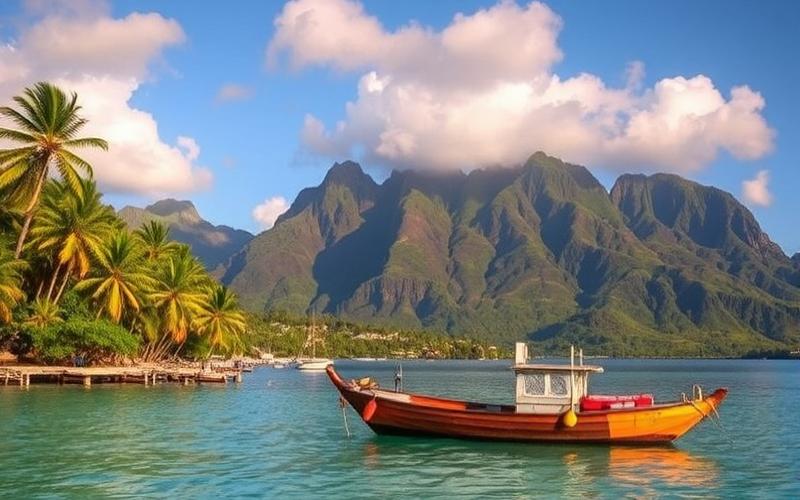
 Published on and written by Cyril Jarnias
Published on and written by Cyril Jarnias
Nestled in the Heart of the South Pacific, Vanuatu Offers an Unreal Landscape
Vanuatu presents an unreal landscape of paradise islands where real estate stands as a true hidden treasure. However, revealing the unique charm of this destination through photos requires specialized photographic expertise, capable of translating the authentic beauty of the locations to captivate the imagination of potential buyers.
From pristine beaches to lush tropical forests, every shot must not only appeal to the eye but also convey the enchanting aura of this archipelago.
Good to Know:
In this context, mastering the secrets of good photography becomes essential for anyone looking to immerse themselves in Vanuatu’s booming real estate market.
The Secrets of a Real Estate Photographer in Vanuatu
The real estate photographer in Vanuatu adapts their techniques to reflect the unique character of the archipelago, where abundant natural light, lush tropical settings, and local architecture influence every shot.
Mastering Natural Light
- Prefers sessions early in the morning or late afternoon to take advantage of soft light that highlights spaces without creating harsh shadows.
- Uses HDR techniques to balance brightness differences between interior and exterior, especially when windows open onto vegetation or the ocean.
- May intentionally incorporate a lens flare effect to add authentic charm to outdoor images.
Leveraging the Tropical Setting
- Systematically frames photos to include lush vegetation, palm trees, and exotic flowers to emphasize the paradise atmosphere.
- Highlights views of the lagoon or ocean: positions the camera at the optimal level in each room so these panoramas are visible from the inside.
Highlighting Local Architectural Features
- Emphasizes natural materials (exotic wood, thatched roofs), large openings to the outdoors, and open spaces typical of Vanuatu constructions.
- Plays with wide perspective using wide-angle lenses (16–24 mm) without excessively distorting architectural lines.
| Preferred Equipment | Primary Use |
| Full-frame DSLR/Mirrorless Camera | High resolution & precise RAW management |
| Wide-angle Lens | Capturing space & architecture without marked distortion |
| Tripod | Stability during long exposures/HDR |
| Remote Trigger | Avoiding any motion blur |
Editing Software Used
- Adobe Lightroom: global adjustments (exposure, colors), selective correction
- Adobe Photoshop: advanced corrections (perspectives, removal of unwanted elements)
- Specialized HDR plug-ins for merging multiple exposures
Enhancing Outdoor Spaces
Tropical gardens and terraces with views are systematically photographed from multiple angles:
- Staging with appropriate furniture
- Prior cleaning of the garden/pool
- Framing to include blue sky or sunset when possible
Practical Tips for Owners/Real Estate Agents:
- Thoroughly prepare the property: tidy up, clean windows/reflective surfaces
- Open all windows/glass doors to maximize natural light
- Clear hallways and main rooms so they appear spacious
- Add a few fresh plant touches indoors as a reminder of the garden
- Take photos in clear weather; avoid noon if possible when shadows are very pronounced
Essential Tip: Always shoot in RAW format: this allows maximum flexibility during editing while preserving all important details.
Good to Know:
In Vanuatu, natural light plays a crucial role in real estate photography, especially with filtering at dawn or dusk to capture unique atmospheres. Professional photographers leverage the tropical setting by highlighting palm trees and lush vegetation to add depth to images. Vanuatu’s typical architecture, often made of wood and natural materials, is enhanced through thoughtful composition and smart use of wide-angle lenses. Equipment-wise, drones are frequently used for spectacular aerial views, and editing is done via software like Lightroom to adjust colors without altering the location’s essence. Practical tips for amateurs include: using a tripod for sharp photos, carefully presenting outdoor spaces like gardens or terraces, and always ensuring horizon lines are straight, especially in ocean views, for a guaranteed professional effect.
How to Choose the Best Angle for the Living Room
Natural light is a major asset in interior photography, particularly in a living room where it shapes the ambiance and highlights the volumes. Its direction and intensity directly influence the choice of shooting angle: it’s best to favor perspectives that capture the light diffused by the main openings (large windows, standard windows), to obtain a bright and balanced image.
Tips for Leveraging Natural Light:
- Photographing during the day allows you to benefit from abundant brightness, especially in Vanuatu where the sun is often intense. Prefer morning or late afternoon for softer light.
- In the evening, compensate for the lack of natural light with indirect lighting or bulbs mimicking daylight temperature (around 5500K), which allows for faithful color reproduction while avoiding overly marked shadows.
- Consider the local climate: in Vanuatu, humidity can accentuate reflections on certain surfaces; placing the camera slightly angled relative to a light source helps limit these effects.
Using Architectural Lines
Using architectural lines proves essential to subtly guide the eye:
- Identify exposed beams, frames, or wall-ceiling junctions and align your composition along these axes.
- Positioning certain elements like a rectangular rug or coffee table parallel to the major lines reinforces visual harmony.
To Compose a Harmonious Image:
To compose a harmonious image:
- Choose an angle offering a clear view of the main decorative elements (sofa, wall art, plants).
- Ensure each object has its place without visual clutter or overload; highlight a few strong details rather than an overly busy ensemble.
Comparison Between Daytime vs. Evening Shots in Vanuatu:
| Time | Advantages | Specific Precautions |
|---|---|---|
| Daytime | Abundant natural light | Manage reflections due to humidity |
| Evening | Customizable cozy ambiance | Use neutral artificial lighting |
Practical Equipment Tips:
- Opt for a wide-angle lens (between 16 mm and 24 mm) to encompass the entire room without excessive distortion.
- Always use a tripod to ensure stability and sharpness, especially during the long exposures needed when light decreases.
Staging Tricks:
- Adding a few locally inspired accessories – Vanuatu woven baskets, decorative shells, or traditional fabrics – will bring authenticity and warmth to the images.
- Ensure to maintain order but also life: placing open books on the coffee table or a basket of exotic fruits evokes local conviviality.
A good interior photo thus balances architectural harmony, optimal management of local light, and authentic decorative touches inspired by the Vanuatu context.
Good to Know:
To capture the perfect living room in Vanuatu, prioritize natural light by choosing a time of day when it’s abundant, but avoid hours when the sun is too low to prevent harsh shadows. Morning or early afternoon light is ideal. Use architectural lines, like exposed beams or openings to the outdoors, to guide the eye and add depth and structure to your photo. The selected angle should highlight key decorative elements, creating a harmonious and attractive scene; include local touches, such as textiles or sculptures, to enrich the ambiance. Photographing during the day emphasizes natural colors and textures, while an evening shot can offer a warm and intimate atmosphere thanks to supplemental lighting. Vanuatu’s climatic conditions, often hot and humid, add a particular light that must be mastered. Use a wide-angle lens to accentuate space and a tripod for sharper images. Don’t hesitate to make the frame more welcoming by adding elements typical of the local culture, such as artisanal objects.
The Impact of Drones on Virtual Tours
The use of drones has profoundly transformed the presentation of real estate properties in Vanuatu, offering an unprecedented aerial dimension to virtual tours. Images captured by drone provide panoramic and detailed views, highlighting not only the property but also its immediate environment: beaches, tropical vegetation, or proximity to points of interest.
Advantages for Potential Buyers:
- Global visualization of the property and its surroundings (land, road access, neighborhood).
- Highlighting of the geographical context (view of the ocean or an iconic volcano like Ambrym).
- Accurate appreciation of the exterior layout: landscaped gardens, pools, or ancillary infrastructures.
- Quick identification of natural or urban assets that influence the property’s value.
Concrete Example:
| Scenario | Improvement Brought by the Drone |
|---|---|
| Coastal Property | Immersive view of the private beach and sea access |
| Secluded Villa | Presentation of the wooded land surrounding the building |
| Urban Building | Perspective on the immediate urban environment |
Virtual tours enriched with aerial sequences thus offer a superior immersive experience compared to simple ground-level photos. They generate more engagement during local real estate marketing campaigns and facilitate remote decision-making—a major advantage for an international or expatriate clientele.
Integration into Local Marketing Strategies:
- Use in premium listings to distinguish a property.
- Distribution on specialized sites and social media to maximize visual impact.
- Creation of promotional videos tailored to the expectations of foreign investors sensitive to Vanuatu’s natural environment.
Legal and Regulatory Implications in Vanuatu:
Any professional use of a drone – particularly in real estate – requires:
- Mandatory registration with the relevant local authorities.
- Strict respect of no-fly zones (protected cultural sites, airport proximities…).
- Prior obtaining of a specific permit according to the type of activity planned (commercial photography).
Challenges Faced by Real Estate Agents:
- High initial investment in performance equipment and technical training required to effectively pilot a drone.
- Ongoing necessity to comply with evolving regulations under penalty of administrative sanctions.
- Increased time management dedicated to video editing/post-processing to optimize each virtual tour.
In summary, the integration of drones is revolutionizing real estate commercial practices in Vanuatu through optimal visual enhancement; however, it also comes with new technical and regulatory constraints that agencies and local sellers must anticipate.
Good to Know:
The use of drones has revolutionized real estate virtual tours in Vanuatu, offering captivating aerial views that reveal the precise location, environment, and layout of properties, essential factors for potential buyers. For example, a seaside house can be beautifully highlighted by aerial shots that showcase its proximity to beaches and surrounding nature. However, in Vanuatu, strict regulations govern the use of drones for real estate photography, requiring specific authorizations and respect for restricted flight zones. These drones are integrated into local real estate marketing strategies as a powerful tool to distinguish a property in the competitive market, although real estate agents must consider the training costs for this technology and its maintenance.
Disclaimer: The information provided on this website is for informational purposes only and does not constitute financial, legal, or professional advice. We encourage you to consult qualified experts before making any investment, real estate, or expatriation decisions. Although we strive to maintain up-to-date and accurate information, we do not guarantee the completeness, accuracy, or timeliness of the proposed content. As investment and expatriation involve risks, we disclaim any liability for potential losses or damages arising from the use of this site. Your use of this site confirms your acceptance of these terms and your understanding of the associated risks.

